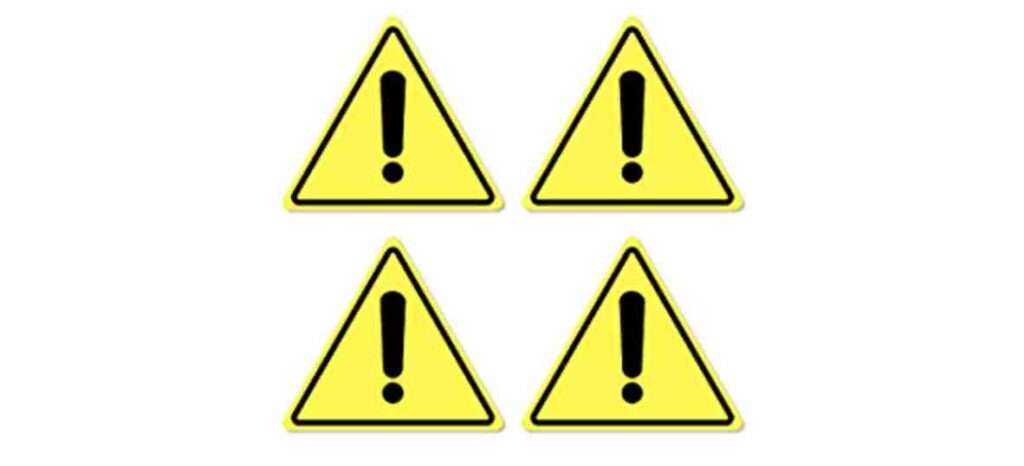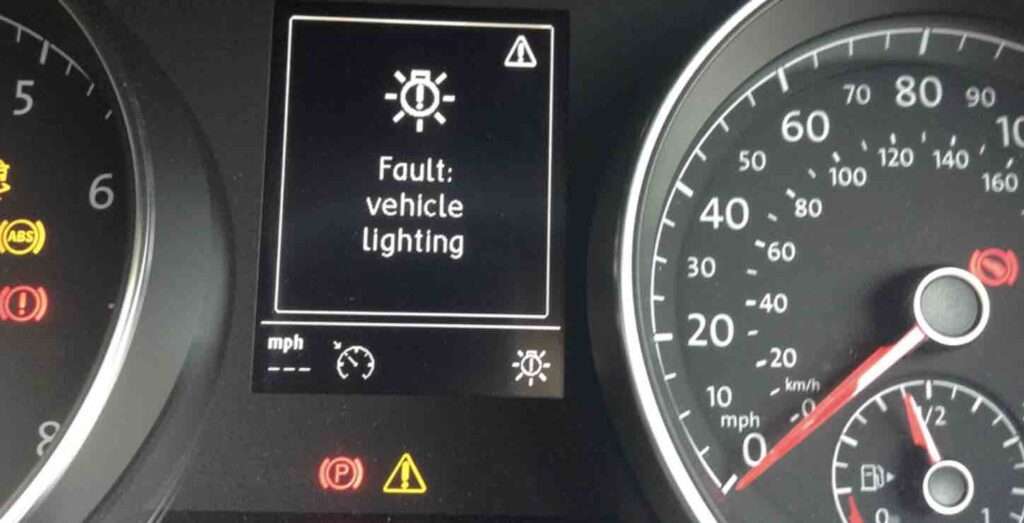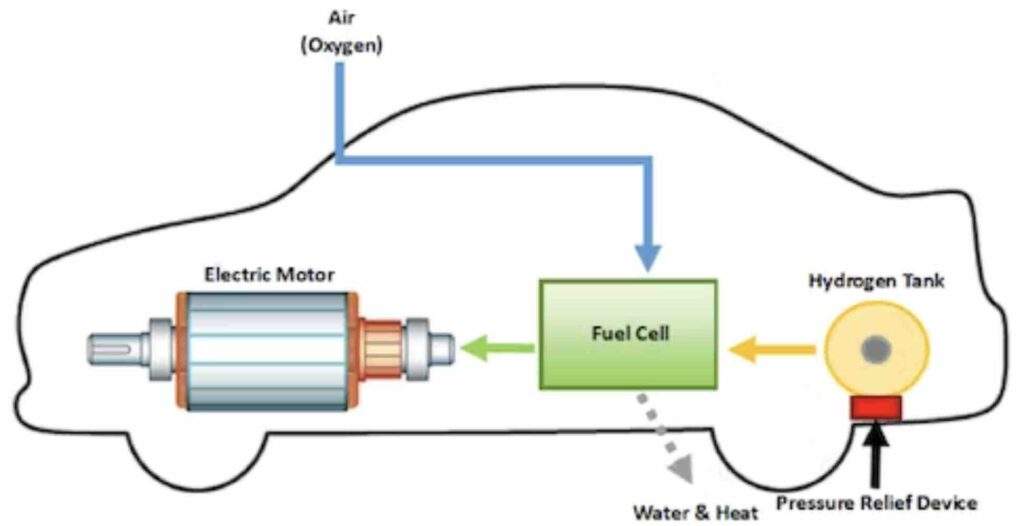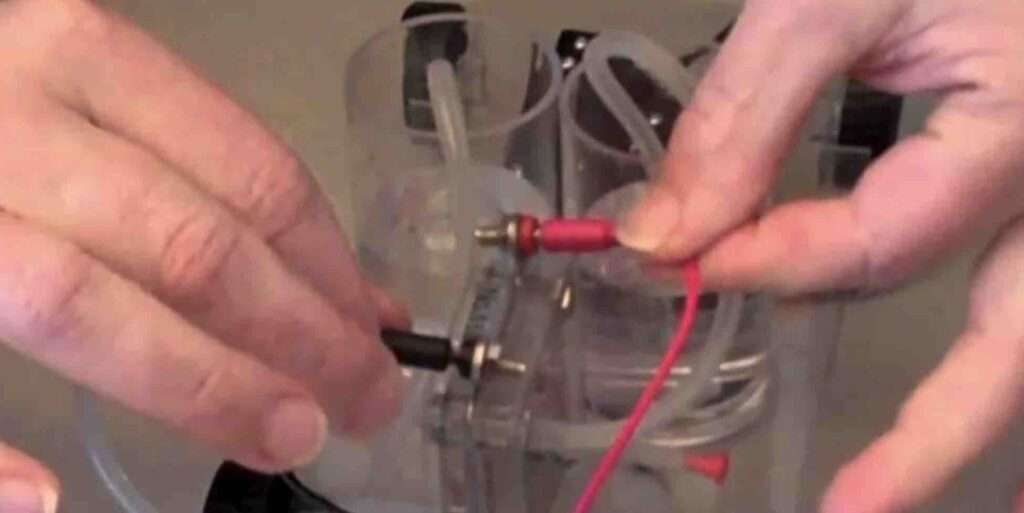Last updated on July 1st, 2023 at 06:33 am
Vehicle warnings are designed to ensure your safety as a driver while ensuring the smooth running of your vehicle. Vehicles are equipped with a stability aid system that works hand-in-hand with warning systems to maintain stability while driving on traction or slick roads. And so, when the system encounters an issue, it will display a yellow triangle exclamation point or mark on the car display unit.

Overview of Yellow triangle with exclamation point Toyota warning light
A yellow triangle with an exclamation mark in your Toyota is often referred to as a “master warning light“. The warning lights are designed to flash on your dashboard when something goes wrong with your car. Your car might also present additional warning messages alongside the flash on some specific car models.
There are several reasons for this warning light coming on. You might receive warning messages because of issues like a loose gasoline cap, low fuel level, or stability issues. Continue reading to learn more about this warning light and how it can improve your driving experience.
What Does Triangle With Exclamation Point Mean?
The yellow triangle with exclamation point on car serves as both a slip indicator and a warning sign that there is a problem with the vehicle’s stability control system. This warning is essential for keeping you safe because it aids in preventing the car from slipping or skidding and it can be a warning for the issue such as low oil and deflated tire or low/high tire rpm.
This triangle symbol is considered to be among the most confusing ones by drivers. Why? Because it comes on for several reasons. This warning functions by monitoring your car’s speed and direction with the aid of sensors in the control system. Some vehicle models aid in regaining control by automatically applying your brakes or restricting engine power when your vehicle loses traction.
Meaning Of Triangle with Exclamation Point Honda
Vehicle stability assist system (VSA) issues are indicated by the triangle with an exclamation point on Honda vehicles. If this system isn’t functioning properly, driving could be risky because it’s intended to help keep the vehicle stable.
While driving, you may make a sharper turn than you intend. With the aid of the Vehicle Stability Assist technology, your Honda will be able to stabilize itself automatically. The VSA light also comes on for other reasons, for example, the VSA light will turn on if you use the incorrect oil or replace it too infrequently.
What Would Cause The VSA Light To Come On?
In this section, we will be discussing the causes of the warning with a yellow triangle and exclamation mark on the dashboard.
1. Damaged VSA System
In some cases, the VSA program itself might be the cause of the problem. When this happens, the warning light will come on normally, however, it continues to stay on without flashing. It’s recommended to take the car to a mechanic to get it checked if this occurs.
2. Turning off VSA Accidentally
Your VSA system might accidentally get disabled especially when you aren’t paying attention to it. The traction control settings are frequently turned off unintentionally so this should not come as much of a surprise. When you find out the system was accidentally turned off, you can simply turn it back on.
3. Engine Problems
When your engine develops issues, the VSA light will come on. From simple issues like a loose gas cap to more serious problems like an oxygen sensor problem, any of these could be the root cause.
Using low-quality oil will also cause major engine issues. Why? This is because Honda engines are made to function with a certain brand of oil. The VSA light may turn on if you use the incorrect or low-quality oil.
4. Varied tire sizes
Your car warning light will also come on when one or more of your tires are noticeably smaller or larger than the others. You will be able to easily notice this while driving because your car will be tilting to one side of the vehicle.
The vehicle stability system depends on the tires having an equal size on all four wheels to function effectively. When it is faced with an anomaly, it is only natural for the warning lights to come on.
5. Oil change is due
Sometimes, the reason for a Yellow triangle indicates that oil changes are needed. For example, if this light appears every 5,000 miles on a Toyota Highlander, it reminds you to change your oil during service.

How Do I Get Rid Of The Triangle With The Exclamation Point In My Car?
In this section, we will briefly address how to get rid of the yellow triangle with an exclamation point warning. If the issue with your car isn’t fixed, this warning will reactivate every time you start your engine.
In some circumstances, however, such as when driving on snow or sand, you can manually turn it off.
You will need to locate the off button to shut down the VSA system. The button can be located on the dashboard, to the left of the steering wheel. You will need to hold down the button for a few seconds to turn off the warning sign.
With this simple procedure completed, the VSA system will then shut down. The VSA will turn off its light temporarily. However, if the warning light does not turn off by itself, it means the fault isn’t solved. Therefore, getting your car checked out and repaired by a mechanic is the right move to make.
How to Fix Yellow Triangle with Exclamation Point on Toyota Highlander
The first thing you need to do when you notice the warning light is to find somewhere safe to park your car. Next, you can simply check under the hood of your car to see if anything is out of place. If the fault is out of your scope of knowledge, you will need to contact or visit a mechanic.
For Toyota Highlander vehicles, error messages will always appear alongside the warning light. The messages outline the reason why your car is giving you a warning. There are several reasons why the master warning light comes on, ranging from urgent causes like low oil pressure to less urgent faults like a loose gas cap. To get these problems fixed, though, you will need the necessary expertise.
Fix Yellow Triangle with Exclamation Point on Toyota Highlander
Now lets say it happens to be an oil change; for instance, here are the steps to fix the yellow triangle with exclamation point On Toyota highlander:
Apply to cars without smart keys:
- Step 1: Start by setting the engine switch to “LOCK” which has a trip meter A displayed
- Step 2: when pressing the reset button on the trip meter, turn the engine switch ON.
Apply to cars with a Smart key system
- Step 1: With the trip meter A reading displayed, turn the “ENGINE START STOP” switch OFF.
- Step 2: Step 2: Press the trip meter reset button and then switch the “ENGINE START STOP” switch to the IGNITION ON setting.
- Step 3: Without a multi-information display, Continue pressing and holding the button until the trip meter displays “000000”. With the multi-information display, Continue pressing and holding the button until “COMPLETE” is displayed on the multi-information display screen.
Conclusion
For most drivers, seeing the triangle with the exclamation point warning sign always gives them heartache. Dealing with this warning light without prior experience can be quite a hassle. However, we hope this article has been helpful so far in helping you deal with issues that might make the warning light come on. Read this How to Start a Car, Causes & Symptoms of a Bad Crankshaft Position Sensor post.

Uchenna is a Radiographer and Auto parts mechanic who recently got his automotive diploma as an auto repair technician, and since then, has worked on fixing various car problems.
Working as just a radiographer, Uchenna didn’t just get all the fulfillment he desired, because he truly loved doing things tilted toward cars. As a kid, he would take apart his toy cars to see how they worked and would spend hours tinkering with his bike.
So, in 2017 he made the tough decision to become an auto mechanic. He threw himself into his studies and now loves every aspect of what he does.
He gets to work with his hands, solving problems and bringing cars back to life, and sharing his knowledge and easy quick-fix guide online are all part of what makes him feel fulfilled.




